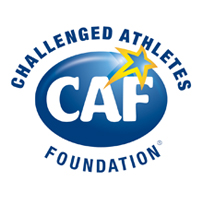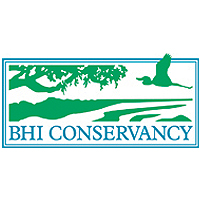A Crew Report
This was one of the most unusual Badwater runs yet, as if running in the middle of summer in the hottest location in the country isn’t unusual enough. Forty-four runners, their crew, race staff, and a thirty-one person film crew all converged on Death Valley for what is considered one of the toughest runs on earth. I was there to support my friend Steven Silver, from El Paso, on his third Badwater run. Previously, Steven had come in second in 1996 and sixth in 1997 (my first experience at Badwater.)
So what was so unusual this year? Temperatures were cooler this year and may not have even cracked the 120 degree mark, although I’m sure it got close. Humidity was high as monsoon rains from the Gulf of Mexico swirled north and then west across Nevada and into Death Valley. These rains forced the closing of the Badwater Road on race day, and delayed the usual 6 A.M.
Initially, due to the road closure, race management sent the caravan of runners 14 miles up Highway 190 to an elongated turnout as an alternate start location. After several informal and sometimes heated meetings between runners, race staff, and a frustrated film producer/director, it was decided to delay the race until 10 A.M. when the Badwater Road would hopefully be opened. Racers and crew drove back to Furnace Creek and quickly filled the both restaurants. Thankfully, while we were eating and resting, they opened the road, and the race started at Badwater, preserving the traditional start location and morning start.
I will not go into all the details of the race, others will be able to do that much better than me. However, something else happened this year that was unusual, something that has nothing to do with weather, start times, or temperature. Instead, it has to do with two runners and their crews. They did not know each other at the start of the race but somehow wound up working together to share both the pain and the joy of this great race.
After leaving Stovepipe Wells, Steven encountered a strong headwind and a brief thunderstorm on the eighteen-mile climb up to Townes Pass. About halfway up, Steven caught up to Art Webb from Santa Rosa California. He had a two-vehicle crew Juli Dell’era, Vincent Pedroia, and John Rodgers. Howard Zatchick my crewmate and I were both tired and were wondering how we were going to keep running with Steven. He was not slowing down despite the heat, wind, and hills. Neither of us could run as far as Steven. We secretly hoped that he and Art would stick together for a while and give us a break.
Our wish came true, Art and Steven hit it off and magically maintained a steady pace. As they climbed to the top of Townes Pass, then across Panamint Valley, up to Father Crowley’s Point, and around the Owens Dry Lake into Lone Pine they made steady progress from seventh and eighth place to fourth and fifth. Art and Steven had bonded and so had their crews.
After a short break and a quick hamburger and rubdown in Lone Pine, Steven and Art set out on the last leg of the run, a grueling thirteen mile four thousand four hundred foot climb up to Whitney Portal. The late afternoon sun was hot and beat down on us as we power walked through the Alabama Hills. We kept Art and Steven cooled off with plenty of spritzing. As we neared the first of two major switchbacks, the remaining mileage became a frequent topic of discussions. We finally decided that at the end of the first switchback it was three miles to the finish. Everyone was calculating when we might finish. If they kept up their brisk pace, they could finish in just over 34 hours. Art’s previous finish was 44 plus hours and Steven’s best was 37:45. Both of them were on track to shatter their previous PR.
We completed the first switchback in about 20 minutes and made the turn for the second one. Twelve minutes later we had it behind us and we were not slowing down even at the higher altitude. As we started to pass the first campground we could hear people yelling and clapping as we headed into the canyon and the shadow of Mount Whitney 14, 495 feet above.
Steven kept asking how much further and I told him just over a mile. I could tell both of them were getting a little anxious. Suddenly, Steven saw a sign that said one mile and he looked at his watch and became extremely excited. If they could finish this last mile in less that 18 minutes they would break 34 hours. Steven began to run and so did Art. Steven moved ahead about 50 yards as Art struggled to keep running in the thin air. I knew there was one shorter steep hill ahead and I advised Art to keep going and that he could do it. Steven was up ahead yelling back encouraging words to Art also.
As we cleared the steep hill with an eighth of a mile to go Art was struggling. Steven was still up ahead yelling for Art to keep going. Art kept asking how much further and I told him it was just around a bend in the road up ahead. People on the side of the road were cheering. Steven yelled to Art that he was going to wait for him. I told Art he had it made and to just keep moving. We could no longer see Steven as he ran around the last bend in the road. As we came around, we could see the massive movie lights at the finish line. On either side everyone was assembled; Art’s crew, his wife, Christine, Howard Zatchick (my co-crew mate), race staff, campers, and film crew all yelling and cheering Steven and Art on. As soon as Steven saw Art, he ran down the hill to meet him. They ran the last 30 yards together and crossed the finish line with arms raised in triumph, finishing in an incredible time of 33:57. They will share fourth place behind Eric Clifton (27:49), Gabriel Flores (28:36), and Mark Godale (29:58).
Art bent over with hands to knees for several minutes as he composed himself. Steven had one of the biggest smiles I have ever seen. Soon Art stood up and raised his arms above his head like the hero he is. It was time to celebrate.
What a dramatic finish, with Steven and Art crossing the finish line together after having run the last 90 miles together. It was no longer a question of who could be faster or who could win but rather, it was about the respect and understanding that can grow between people joined in a common goal – and what a goal Badwater is. Both of these guys demonstrated the highest degree or courage and sportsmanship throughout the race. Tears of joy and happiness filled everyone’s eyes as they witnessed this wonderful finish to a perfect race. I am proud to be associated with both of these great guys and their excellent crewmembers and everyone else at Badwater.
Jim Wolff, Stan Swartz, and Samir Shahin M.D. are co-author of 50 Trail Runs in Southern California published by The Mountaineers. Jim also supported Steven Silver in the 1997 Badwater race.








